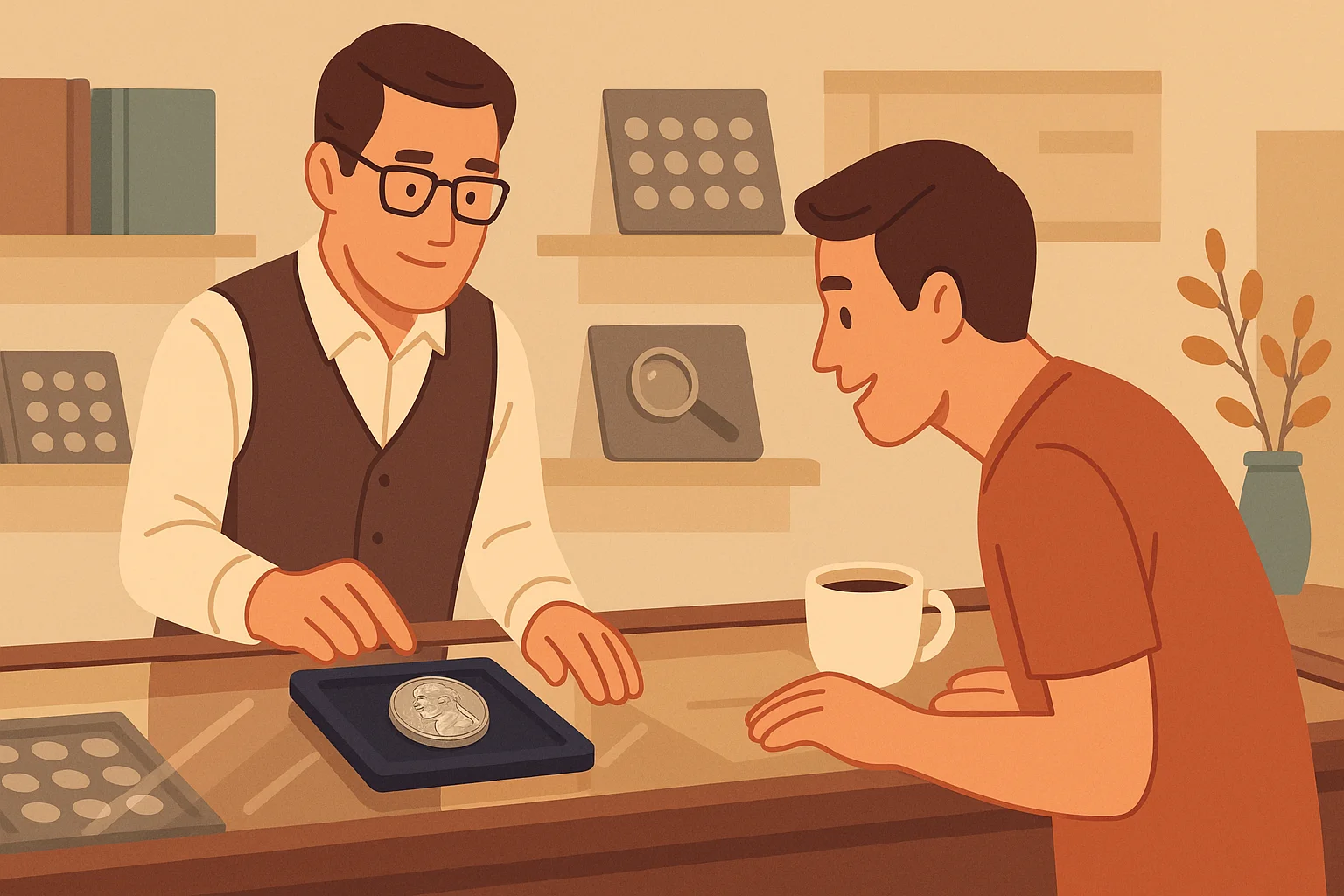Jefferson Nickels with Values of Thousands
Jefferson nickels, first introduced in 1938, are among the most familiar coins in American pockets and cash registers. Yet within this common series lies a fascinating world of nickels worth money, sometimes thousands of dollars. While the majority of Jefferson nickels are worth only face value, certain minting quirks, varieties, and rare issues elevate some into the realm of true treasures. For collectors and hobbyists, knowing which dates and varieties stand out can mean the difference between overlooking a simple coin and recognizing a valuable prize.

Historical Overview of Jefferson Nickels
The Jefferson nickel was created in 1938 to replace the Buffalo nickel, featuring President Thomas Jefferson on the obverse and Monticello, his Virginia estate, on the reverse. Designed by Felix Schlag, the coin quickly became a staple of U.S. coinage. Over the decades, it has seen shifts in composition and design but has retained its place as a collector favorite.
Notable periods include:
1938 debut: Classic Jefferson design with sharp Monticello details.
Wartime nickels (1942–1945): Silver alloys were used due to nickel shortages during World War II. These “war nickels” often stand out for their large mintmarks placed above Monticello.
Later refinements: Slight design modifications and proof sets gave collectors variations to pursue.
This long minting history set the stage for rare varieties and errors, many of which now command premium values.
Why Certain Jefferson Nickels Are Worth Thousands
While age alone does not guarantee high value, the following factors often elevate specific Jefferson nickels into the upper price range:
Mint errors like overmintmarks and doubled dies.
Special strikes such as the 1964 Special Mint Set nickels.
Condition-sensitive varieties where “Full Steps” on Monticello’s stairs are visible.
Low-mintage coins or those produced under unusual historical conditions.
In auctions and private sales, high-grade examples of these rare nickels have sold for thousands, with some crossing the $30,000 mark in exceptional cases.
Top Jefferson Nickels Worth Thousands
Collectors often focus on specific Jefferson nickels that combine rarity, condition, and historical context. Below are the standout issues documented in trusted numismatic guides and auction records:
1964 Special Mint Set (SMS) Nickel
Why valuable: Only a handful were struck under special conditions with satin-like finishes.
Estimated value: Up to $8,750 in MS65.
Collector note: These are highly elusive and often confused with regular strikes. Authentication is essential.
1942-D Over Horizontal D
Why valuable: A striking over-mintmark error where a “D” was punched over another “D” lying sideways.
Estimated value: Around $4,600 or more in higher grades.
Collector note: This error appeals strongly to variety specialists.
1939-P Double Monticello
Why valuable: The reverse features doubling of the Monticello building details, especially the inscriptions.
Estimated value: About $1,500 for crisp examples.
Collector note: Known as one of the earliest doubled die varieties of the series.
1946-D Over Inverted D
Why valuable: A clear repunched mintmark error where the “D” was struck over an inverted “D.”
Estimated value: More than $1,000, depending on condition.
Collector note: Careful magnification is needed to distinguish this rare mintmark.
“Full Steps” Varieties
Why valuable: Jefferson nickels with sharp, fully defined steps on Monticello’s design command high premiums.
Estimated value: Can range from a few hundred to several thousand dollars, depending on grade and rarity.
Collector note: These are especially prized in the grading community.
Comparison Table of Regular vs. Rare Jefferson Nickels
Jefferson Nickel | Key Feature | Estimated Value (High Grade) | Collector Insight |
1964 SMS Nickel | Special Mint Set, satin finish | $8,750 | Authentication vital, extremely scarce |
1942-D Over Horizontal D | Over-mintmark error | $4,600+ | Strong demand from error collectors |
1939-P Double Monticello | Doubled reverse design | $1,500 | Early doubled die, popular variety |
1946-D Over Inverted D | Repunched mintmark | $1,000+ | Requires magnification to confirm |
“Full Steps” Varieties | Fully detailed Monticello steps | $2,000–$30,000 | Market premiums for sharp strikes |
Why Jefferson Nickels Stand Out Among Collectors
Unlike short-lived series, Jefferson nickels have been minted continuously since 1938. This longevity produces a wide range of collecting opportunities—from affordable starter sets to elite, high-value rarities. Their mix of historical significance, error varieties, and special issues makes them one of the most accessible yet rewarding U.S. coin series.

Using Technology to Unlock Jefferson Nickel Values
For modern collectors, accurately identifying and evaluating Jefferson nickels no longer relies solely on magnifying glasses and printed guides. Digital tools have transformed numismatics, bringing precision and accessibility to everyone from casual hobbyists to advanced collectors.
The Coin ID Scanner app (available on Android and iOS) is a standout example. Its features align perfectly with the challenges of Jefferson nickel collecting:
Photo Identification: Snap or upload an image of a nickel to receive instant details on mint year, type, edge, composition, diameter, weight, and estimated market price.
Digital Collection Management: Build and maintain a structured coin inventory, complete with notes and categories.
Extensive Database: Access over 187,000 coins worldwide, including Jefferson nickels with documented errors, proofs, and special strikes.
Smart Filters and AI Coin Helper: In premium mode, refine searches or receive AI-driven insights to detect rarities like doubled dies or “Full Steps” varieties.
By combining traditional knowledge with digital resources, collectors minimize mistakes and maximize value discovery.
Practical Steps for Jefferson Nickel Collectors
Start with Common Issues: Circulated nickels from the 1940s–1960s are inexpensive and offer a foundation for learning grading basics.
Look for Error Varieties: Pay special attention to mintmarks and reverse designs where anomalies can mean thousands in value.
Prioritize Condition: A high-grade “Full Steps” nickel often brings higher returns than lower-grade rarities.
Use Technology Wisely: Apps like Coin ID Scanner provide quick verification and help track your collection efficiently.
Stay Informed: Follow numismatic auction records and reputable guides to monitor shifting market trends.
Why Jefferson Nickels Remain Fascinating
Jefferson nickels embody a rare mix of history, artistry, and surprise value. From wartime metal compositions to scarce mint errors, these coins tell stories far beyond their face value of five cents. Some specimens are worth thousands, proving that even common-looking change can hide treasures.
For collectors, the journey is as rewarding as the discovery. Equipped with tools like Coin ID Scanner and knowledge of key varieties, anyone can navigate the Jefferson nickel series with confidence. Whether you’re organizing a beginner set or hunting for a high-grade rarity, these coins remain one of the most exciting gateways into U.S. numismatics.

